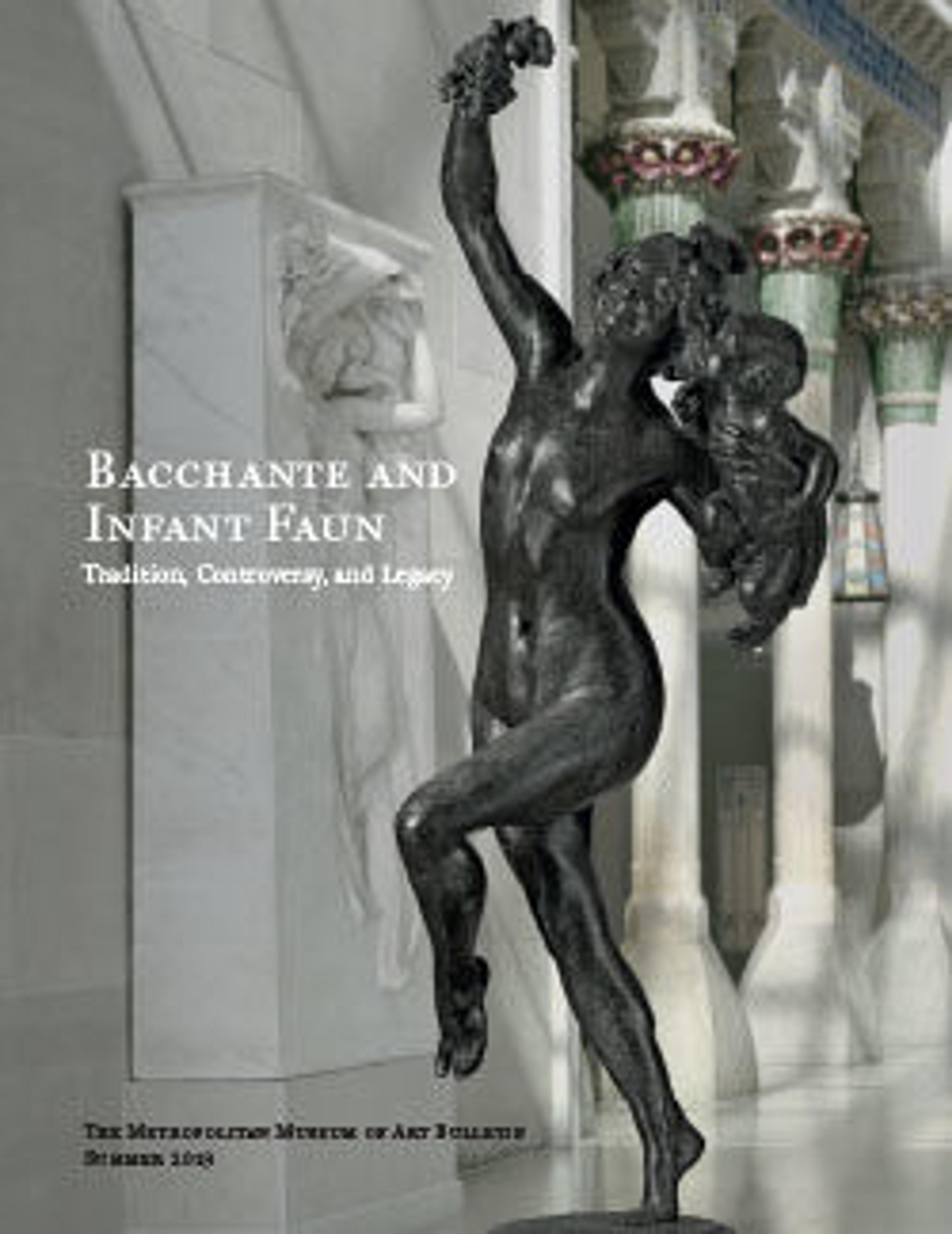English
Bacchante and Infant Faun
“Bacchante and Infant Faun” epitomizes the dramatic French Beaux-Arts style that dominated American sculpture during the late nineteenth century. An exuberant pagan reveler with grapes in her raised right hand holds an eager infant in the crook of her left arm. Her twinkling eyes, joyous mouth, spiraling form, lively silhouette, and richly textured surface combine to produce one of the most vibrant images in American art. MacMonnies gave this cast to the architect Charles Follen McKim (1847–1909) as thanks for a fifty-dollar loan. When McKim’s plan to install it in the courtyard of his new Boston Public Library set off an angry storm about its dubious moral tone, he instead presented it to the Metropolitan.
Artwork Details
- Title: Bacchante and Infant Faun
- Artist: Frederick William MacMonnies (American, New York 1863–1937 New York)
- Founder: Cast by Thiébaut frères (French)
- Date: 1893–94, cast 1894
- Culture: American
- Medium: Bronze
- Dimensions: 84 x 29 3/4 x 31 1/2 in. (213.4 x 75.6 x 80 cm)
- Credit Line: Gift of Charles F. McKim, 1897
- Object Number: 97.19
- Curatorial Department: The American Wing
Audio
3803. Bacchante and Infant Faun, Part 1
0:00
0:00
We're sorry, the transcript for this audio track is not available at this time. Please email info@metmuseum.org to request a transcript for this track.
Listen to more about this artwork
More Artwork
Research Resources
The Met provides unparalleled resources for research and welcomes an international community of students and scholars. The Met's Open Access API is where creators and researchers can connect to the The Met collection. Open Access data and public domain images are available for unrestricted commercial and noncommercial use without permission or fee.
To request images under copyright and other restrictions, please use this Image Request form.
Feedback
We continue to research and examine historical and cultural context for objects in The Met collection. If you have comments or questions about this object record, please complete and submit this form. The Museum looks forward to receiving your comments.
